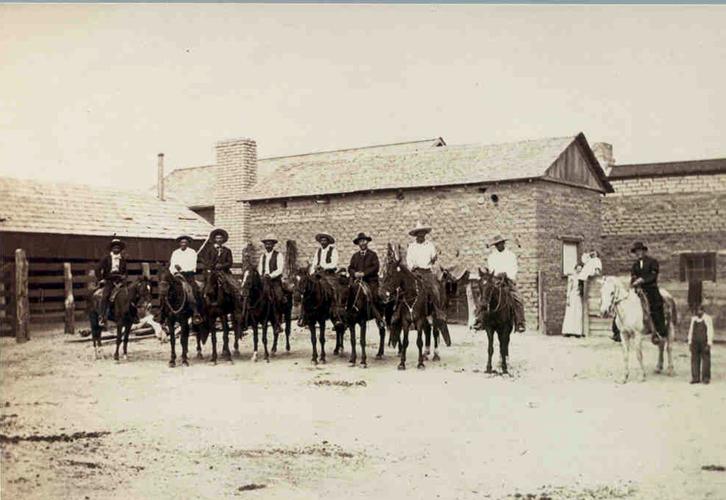Imagine, if you will, how different it must have been in the 1870s to ride horseback or drive a horse-drawn wagon starting from Tucson through the Sonoran Desert heading toward what is now the area around Sonoita.
East of the Santa Rita Mountains, above the hot desert, are rolling hills, covered with lush green grasslands as far as the eye could see.
A cool, steady breeze caresses your face as you see game animals staring back at you in the distance.
It is such a stark contrast to living in the hot, dry, dust-covered adobe boxes of Tucson, which is a full-day’s ride away.
But as you continue on your way, your life was in extreme peril, according to historical documents archived by the Empire Ranch Foundation.
Among several calamities, which are inherent whenever one rides horseback, is the all-so-real possibility of crossing paths with raiding Apaches.
Such a threat prompted Tucson entrepreneur Edward N. Fish to sell the 160 acres of prime grazing land that his brother-in-law, William Wakefield, homesteaded for him.
Just before, Fish had transferred the title from Wakefield in June 1876, for a fee of $500. He wanted to make the ranch his home.
But stories of raids forced him to move back, according to Walter L. Vail, one of the partners who then bought the ranch from Fish.
Vail was undeterred, and so in the summer of 1876, with his new partner Herbert R. Hislop, they purchased the land and all that came with it for $2,000. With the partners that followed, they created the Empire Ranch.
Although the ranch headquarters was originally homesteaded in the 1870s, it was simply a four-room, flat-roofed adobe structure with packed dirt floors with no windows, no doors and no furnishings, according to an 1876 letter written by Hislop.
In the back of the house was an adobe-walled corral to protect the livestock from thieves and predators. The only access to the corral was through a zaguan — a breezeway between the four rooms.
Such was the condition as Vail and Hislop moved into the building, but they did not make the purchase just for the structure. The 160-acre property included fine grazing land and more importantly, water.
As time went on, the partners added window panes, doors and wood floors but eventually got help from Native American adobe masons.
And, as they added more partners and purchased more of the surrounding properties extending their land holdings, the size of the house grew to a total of 22 rooms.
Although it was never attacked, droughts and changing markets had an effect on operations.
Still, the size of the Empire Ranch eventually grew over 100,000 acres.
By the 1920s, cattle operations changed hands from the Vail family to the Boice family, who then sold the property to Gulf America Corp. in 1969.
The Boice family leased the land and continued cattle operations until 1975, when Gulf sold the land to the Anamax Mining Co. which then leased the land to rancher John Donaldson.
In 1988, the Bureau of Land Management acquired the land through a public-private land swap and, since 2009, the Tomlinson family continues cattle operations on the property.
The headquarters is vacant, but it is under the care of the Empire Ranch Foundation, a private, nonprofit organization that started in 1997 to develop private support to preserve the structures for recreational and educational purposes for the general public.
The ranch reflects the history of the cattle industry from its hardscrabble beginnings to the ever-changing, if not, volatile cattle market of today.
And traveling to the ranch is not the arduous journey it once was. The road is paved and on a good day, it takes a little more than an hour from downtown Tucson.





